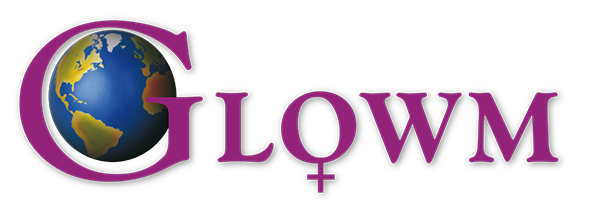This chapter should be cited as follows:
Lalonde AB, Glob Libr Women's Med
ISSN: 1756-2228; DOI 10.3843/GLOWM.421723
Nutrition in the Periconceptional, Pregnancy and Postpartum Periods
Volume Editor:
DOI 10.3843/GLOWM.00000
Chapter
Special aspects of nutrition in pregnancy: adolescence, multiple pregnancy and advanced maternal age
VIDEO 19
Pregnancy is a critical period when nutrition and lifestyle choices significantly impact maternal and fetal health. Certain groups, such as adolescents, women with multiple pregnancy and those of advanced maternal age, face unique challenges and risks. However, these risks can be mitigated through proper nutrition and lifestyle interventions.
INTRODUCTION
Pregnancy is a critical period in which nutrition and lifestyle choices significantly impact maternal and fetal health. The relevance of nutrition during pregnancy and early infancy in defining short-term health and survival has been well established. The Developmental Origins of Health and Disease (DOHaD) paradigm provides a framework to assess the effect of early nutrition and growth on long-term health.

Maintaining a healthy pregnancy requires proper nutrition and making the right lifestyle choices. A healthy diet before pregnancy should have adequate protein and be rich in vitamin B12, iron, calcium and vitamin D, amongst other nutrients.
Poor lifestyle choices, such as excessive dieting, having a negative self-image, consumption of unsafe foods, use of illicit drugs and smoking, can have severe negative effects on both mother and developing baby.
Certain groups, such as adolescents, women with multiple pregnancy and those of advanced maternal age, face unique challenges and risks. However, these risks can be mitigated through proper nutrition and lifestyle interventions.
This presentation explores the challenges faced by these three groups and offers advice on their optimal management.
Adolescent pregnancy
After sub-Saharan Africa, Latin America and the Caribbean have the highest rate of adolescent pregnancy globally, with 66.5 per 1000 girls aged 15–19 years. Of concern is that the prevalence has increased in girls under 15, with no significant decline in fertility rates in the region.
Principal risks associated with adolescent pregnancy include prematurity, low birth weight, perinatal morbidity and mortality, hypertensive disorders and congenital anomalies, higher rates of infection and complications such as premature rupture of membranes.
Strategies to prevent adolescent pregnancy include prohibiting childhood marriage, promoting evidence-based prevention programs, increasing access to contraception and prenatal care, reforming laws to ensure safe abortion and upholding gender equality.
Multiple pregnancy
The rate of multiple pregnancy has increased with advancing maternal age (30–40 years) and increased use of fertility treatments. Family history, obesity and black ethnicity are all associated with a higher prevalence.
Multiple pregnancy poses increased risk of diabetes mellitus, pre-eclampsia, premature labor, postpartum hemorrhage, anemia and depression.
Fetal risks include preterm delivery and low birth weight and increased likelihood of birth defects including spina bifida, congenital heart disease and digestive abnormalities.
The key recommendations are to tailor weight gain based on prepregnancy body mass index, take additional folic acid and attend more prenatal visits.
Advanced maternal age (35+ years)
Advanced maternal age leads to fertility challenges. Fertility rates are declining: at 20–30 years, there is 1 in 4 chance of conception per cycle whereas, at 35–45 years, the chance is 1 in 10. Contributing factors include fewer eggs and increased rate of chromosomal abnormality in remaining eggs, endometriosis and fibroids.
Risks to the mother of advanced maternal age include pre-eclampsia, gestational diabetes, hypertension and miscarriage. There is also a greater likelihood of needing a Cesarean delivery.
Fetal risks include chromosomal abnormality, low birth weight, prematurity and pregnancy loss.
Key recommendations are to undertake preconception consultation, if possible, and start prenatal visits and ultrasound examinations early in pregnancy. A diet rich in protein, folic acid, calcium, iron and vitamin D is important. Harmful substances should be avoided and weight management should be carefully considered.
TAKE-HOME MESSAGES
- Nutrition before and during pregnancy is critical for both mother and baby especially in teenage, multiple and advanced-age pregnancies.
- Nutrition supplementation may be needed in many pregnancies.
- Adolescent pregnancies, multiple pregnancies and pregnancies in women over 35 years pose unique challenges that require specialized care.
- Early antenatal visits and nutritional evaluations are essential for managing risks and ensuring healthy outcomes.
- Vitamin and mineral supplementation should ideally begin before pregnancy to optimize maternal and fetal health.
CONFLICTS OF INTEREST
Author(s) statement awaited.
REFERENCES
Wilson RD, O'Connor DL. Guideline No. 427: Folic Acid and Multivitamin Supplementation for Prevention of Folic Acid-Sensitive Congenital Anomalies. J Obstet Gynaecol Can. 2022 Jun;44(6):707–719.e1. | |
Ibrahim I, Bashir M, Singh P, Al Khodor S, Abdullahi H. The Impact of Nutritional Supplementation During Pregnancy on the Incidence of Gestational Diabetes and Glycaemia Control. Front Nutr. 2022 Apr 8;9:867099. | |
Parrettini S, Caroli A, Torlone E. Nutrition and Metabolic Adaptations in Physiological and Complicated Pregnancy: Focus on Obesity and Gestational Diabetes. Front Endocrinol (Lausanne). 2020 Nov 30;11:611929. | |
Pregnancy after 35: Healthy pregnancies, healthy babies. www.mayoclinic.org/healthy-lifestyle | |
Gutierrez Y, King JC. Nutrition during teenage pregnancy. Pediatr Ann. 1993 Feb;22(2):99–108. | |
Tesfaye A, Tamiru D, Belachew T. Undernutrition among pregnant adolescent: a scoping systematic review. Population Medicine. 2023;5(Supplement):A1038. |
Online Study Assessment Option
All readers who are qualified doctors or allied medical professionals can automatically receive 1.5 Continuing Professional Development points plus a Study Completion Certificate from GLOWM for successfully answering four multiple-choice questions (randomly selected) based on the study of this chapter. Medical students can receive the Study Completion Certificate only.
(To find out more about the Continuing Professional Development awards program CLICK HERE)
